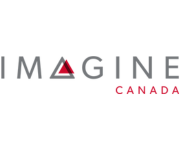Data and evidence are vital pillars in the not-for-profit and philanthropic sector, guiding organizations toward informed decisions and impactful actions. Data and evidence, while often used interchangeably, are distinct yet closely related concepts, each playing a crucial role in driving change.
What is Data? (The Raw Material)
Data serves as the raw material from which we derive evidence. Data consists of unprocessed information from various sources, including surveys, databases, government reports, and administrative records. This data can take the form of quantitative figures or qualitative narratives, and its reliability can vary significantly due to factors such as bias.
What is Evidence? (Refined Insights)
On the other hand, evidence is the outcome of carefully analyzing and interpreting data to draw meaningful conclusions. It encompasses research studies, evaluations, and case studies that undergo rigorous scrutiny for validity, reliability, and relevance.
Data lays the foundation, while evidence represents the path toward informed decision-making. Data-driven approaches foster transparency, accountability, and effectiveness, enabling not-for-profits to serve their communities better.
How and Why Use Data?
Not-for-profits can use data and evidence to assess, plan, allocate resources, and demonstrate their impact effectively. These practices lead to more informed, efficient, and impactful decision-making in the nonprofit sector. Below are some basic guidelines nonprofits should adopt to maximize their impact if they haven’t already done so.
Ensure data quality: Use rigorous data collection and validation processes for reliable insights.
Integrate data into planning: Incorporate data and evidence into strategic planning for well-informed actions.
Embrace continuous learning: Engage in feedback loops and evaluations for ongoing improvement.
Promote knowledge sharing: Share findings and collaborate to accelerate progress.
Invest in data literacy: Equip staff with data skills through training and development.
Leverage technology: Use tech solutions for efficient data collection, analysis, and reporting.
Engage stakeholders: Involve beneficiaries and community members for valuable insights.
Beyond these best practices, the not-for-profit sector is exploring innovative approaches to enhance the “research to policy” pipeline, akin to healthcare’s “bench to bedside” concept. An example is the What Works Global Summit 2023, held in Ottawa, which brought together practitioners and academics to help bridge the gap between research and real-world policies. During the conference, they looked at what sets apart research that influences policies from research that stays in academic circles. The conference focused on the sector’s learning practices, ensuring that robust evidence becomes the foundation of informed decision-making. Many workshops and panel discussions centred on evidence synthesis — gathering and analyzing existing research to present thorough insights, conclusions, and recommendations. These methodologies allow decision-makers to form a comprehensive understanding of the available evidence.
This perspective isn’t entirely new, as it has long been studied and applied in the healthcare sector. As mentioned above, the healthcare field has utilized the “bench to bedside” approach, which aims to improve the translation of scientific research into patient care with the goal of tangible improvements in health outcomes. The not-for-profits sector can draw valuable inspiration from these well-established practices in other fields.







